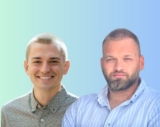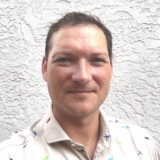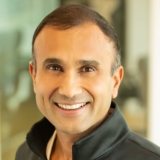Aaron Luk, NVIDIA’s Director of Product Management for Simulation Technology, dives into Universal Scene Description (OpenUSD) and how it integrates seamlessly ...
Tin Sohn, technical lead for vision-language-action models at Porsche, and Brian Moore, CEO and co-founder of Voxel51, explore how AI, data, and simulation are ...
Mike Pritchard, Director of Climate Simulation Research at NVIDIA, discusses how artificial intelligence is enhancing the way we model and predict climate ...
Danny Wu, Head of AI Products at Canva, explains how AI is transforming visual communication from a tool for professionals into superpowers for everyone. With ...
Danny Wu, Head of AI Products at Canva, explains how AI is transforming visual communication from a tool for professionals into superpowers for everyone. With ...
Greg Meyers, chief digital and technology officer at Bristol Myers Squibb, explains how AI is transforming pharmaceutical research from hypothesis-driven ...
Tomás Puig, founder and CEO of Alembic, joins the NVIDIA AI Podcast to discuss the intersection of AI, data, and marketing. He shares how Alembic uses advanced ...
Munjal Shah, CEO of Hippocratic AI, discusses how AI agents can dramatically expand healthcare capacity and access. With 1.8 million patient calls completed ...
Tony Ambrozie from CVS Health and Arijit Sengupta from Aible share how their partnership is transforming enterprise AI development through rapid prototyping ...
In this episode of the NVIDIA AI Podcast, Dr. Marco Pavone, Director of Autonomous Vehicle Research at NVIDIA and Professor at Stanford University, joins us to ...
Bernt Børnich, founder and CEO of 1X Technologies, shares his vision for the future of humanoid robotics. Hear how the company is building fully autonomous ...
Bartley Richardson, senior director of engineering and AI infrastructure at NVIDIA, discusses the transformative potential of agentic AI as the next level of ...
Matthias Loskyll, head of virtual control and industrial AI at Siemens Factory Automation, joins the NVIDIA AI Podcast to discuss how AI, simulation and ...
Visa processes an astounding number of transactions each year, which means even small improvements in its systems can have a significant impact. Sarah Laszlo, ...
Rama Akkiraju, VP of IT for AI and ML at NVIDIA, discusses the transformative power of AI in enterprises. Akkiraju highlights the rapid evolution from ...
Yum! Brands, the parent company of KFC, Taco Bell, Pizza Hut and Habit Burger & Grill, is partnering with NVIDIA to streamline order taking, optimize ...
Prem Natarajan, the executive vice president, chief scientist and head of AI at Capital One, discusses how AI is enhancing financial services by transforming ...
Max Jaderberg and Sergei Yakneen from Isomorphic Labs discuss how AI is enhancing drug discovery by treating biology as an information processing system. They ...
Angle Bush, founder and CEO of Black Women in Artificial Intelligence (BWIAI), discusses her mission to foster a more inclusive and diverse AI community. Learn ...
Jacob Liberman, Director of Product Management at NVIDIA, discusses how agentic AI is transforming enterprises by automating complex tasks and enhancing human ...



















